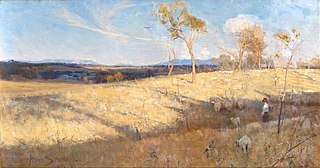
The Heidelberg School was an Australian art movement of the late 19th century. It has been described as Australian impressionism.
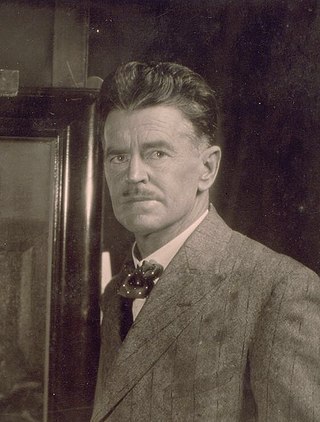
William Beckwith McInnes was an Australian portrait painter, winner of the Archibald Prize seven times for his traditional style paintings. He was acting-director at the National Gallery of Victoria and an instructor in its art school.
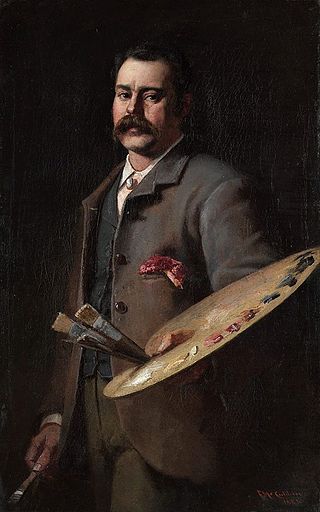
Frederick McCubbin was an Australian artist, art teacher and prominent member of the Heidelberg School art movement, also known as Australian impressionism.
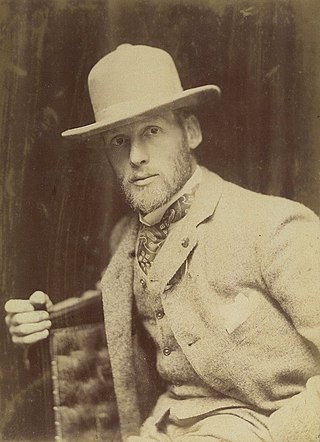
Thomas William Roberts was an English-born Australian artist and a key member of the Heidelberg School art movement, also known as Australian impressionism.

Sir Arthur Ernest Streeton was an Australian landscape painter and a leading member of the Heidelberg School, also known as Australian Impressionism.

Sir John Campbell Longstaff was an Australian painter, war artist and a five-time winner of the Archibald Prize for portraiture. Longstaff was one of the most prolific portraitists of the Edwardian period, painting many high society figures in both Australia and Britain.

Clara Southern was an Australian artist associated with the Heidelberg School, also known as Australian Impressionism. She was active between the years 1883 and her death in 1940. Physically, Southern was tall with reddish fair hair, and was nicknamed 'Panther' because of her lithe beauty.

Emanuel Phillips Fox was an Australian impressionist painter.

The Box Hill artists' camp was a site in Box Hill, Victoria, Australia favoured by a group of plein air painters in the mid to late 1880s who later became associated with the Heidelberg School art movement, named after Heidelberg, the site of another one of their camps.

Walter Herbert Withers was an English-born Australian landscape artist and a member of the Heidelberg School of Australian impressionists.
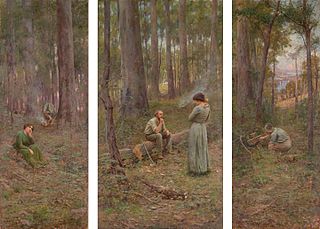
The Pioneer is a 1904 painting by Australian artist Frederick McCubbin. The painting is a triptych; the three panels tell a story of a free selector and his family making a life in the Australian bush. It is widely considered one of the masterpieces of Australian art.
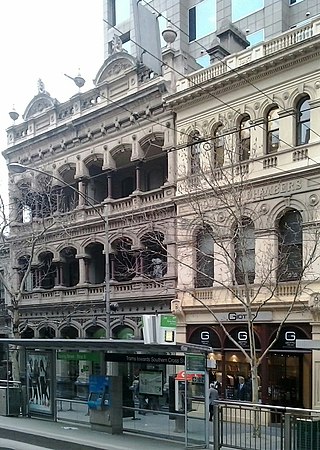
Grosvenor Chambers, at number 9 Collins Street, Melbourne, contained the first custom-built complex of artists' studios in Australia.

The 9 by 5 Impression Exhibition was an art exhibition held in Melbourne, Victoria, Australia. It opened on 17 August 1889 at Buxton's Rooms on Swanston Street and featured 183 "impressions", the majority of which were painted by Charles Conder, Tom Roberts and Arthur Streeton, three leading members of the Heidelberg School art movement, also known as Australian impressionism. Two other members, Frederick McCubbin and Charles Douglas Richardson, made smaller contributions.

On the wallaby track is a 1896 painting by the Australian artist Frederick McCubbin. The painting depicts an itinerant family; a woman with her child on her lap and a man boiling a billy for tea. The painting's name comes from the colloquial Australian term "On the wallaby track" used to describe itinerant rural workers or "swagmen" moving from place to place for work. The work has been described as "among the best known and most popularly admired of Australian paintings".

Louis Abrahams was a British-born Australian tobacconist, art patron, painter and etcher associated with the Heidelberg School art movement, also known as Australian Impressionism.

Bush Idyll is a 1893 painting by Australian artist Frederick McCubbin, and widely regarded as one of the finest masterpieces in Australian art history. The painting depicts a girl and boy - who is playing a tin whistle - lying on the ground near a lake.

Thomas Humphrey was a Scottish-born Australian artist and photographer who was associated with the Heidelberg School art movement, also known as Australian impressionism.
Sniders & Abrahams was an Australian tobacco manufacturing company formed in 1886 in Melbourne, Victoria. It was the first Australian company to mass-produce cigarettes.
The Buonarotti Club was a bohemian artists' society in Melbourne, Australia between 1883 and 1887, associated with Heidelberg School of painters.
Louis Frederick McCubbin, only ever known as "Louis McCubbin", was an Australian war artist, landscape painter and art gallery director.


















